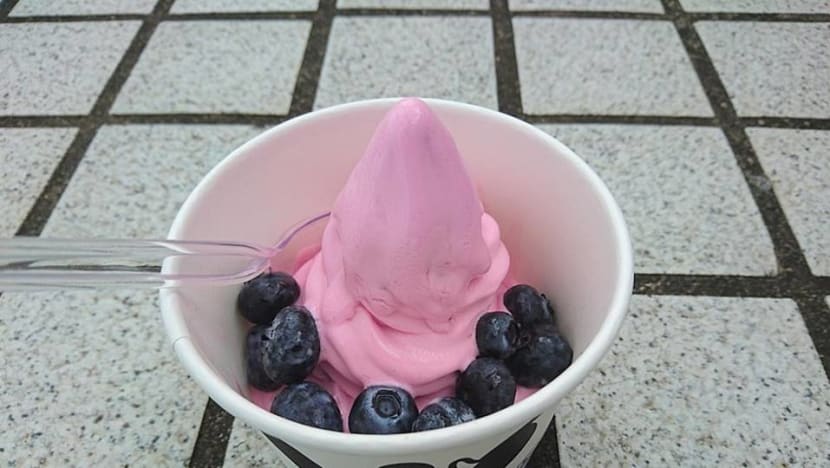How healthy is frozen yoghurt? 4 froyo fallacies

File photo of frozen yoghurt. (Photo: Wikimedia Commons / Ceeseven)
SINGAPORE: The news that llaollao frozen yoghurt will no longer be available in Singapore has got some fans of the cold, creamy dessert hot under the collar.
While there are still plenty of establishments offering froyo, llaollao had a loyal fan base who were willing to stand in line for a serving.
Frozen yoghurt has taken off in Singapore in a big way - partially because people just like the smooth, creamy dessert that can be customised with all sorts of toppings, but also because some people think it is a relatively healthy treat.
But is that the case?
Here are some froyo fallacies to think about while queueing for another fix:
FALLACY 1: FROYO HAS PROBIOTICS
Froyo isn't just yoghurt that has been in the freezer, said Ms Helen West, a gastro-specialist dietitian with the UK’s National Health Service, on Healthline. If you're counting on improving your gut health with probiotics, you may be better off digging your spoon into a tub of natural yoghurt.
To make frozen yoghurt, said Ms West, manufacturers first mix milk and sugar, and pasteurise the mixture at a high temperature to kill harmful bacteria. Yoghurt cultures are then added and the mixture is allowed to rest for up to four hours before it's frozen.
"If the frozen yoghurt was pasteurised after the good bacteria were added, they would have been killed off," said Ms West. Even if the gut-friendly bacteria were added afterwards, not all will survive the freezing process.
FALLACY 2: IT'S HEALTHIER THAN ICE CREAM
Yes and no. Consider the nutritional breakdown of ice cream and froyo: Both desserts are made from dairy products, so both provide bone-building calcium. But here's where the dairy sources matter: Froyo is made with milk, while ice cream is made with cream. Hence, fat-wise, froyo is a better option than ice cream as it has 4g of fat per cup compared to ice cream's 7g, according to the USDA.
Even low-fat froyo isn't as saintly as it sounds for your health. Manufacturers often up the sugar content to enhance the flavour, said Ms West.
Ms Dana Kofsky, a California-based nutritionist, agreed: "People don't realise that it often has more sugar than ice cream". According to a CNN article, Ms Kofsky said that each half-cup serving of froyo has about 17g of sugar. Ice cream has about 14g of sugar in the same serving size. "In order to get rid of the tart taste, froyo companies often add sugar," she said.
Ms Alissa Rumsey, a spokesperson for the Academy of Nutrition and Dietetics, noted on CNN that many froyo brands add sugar substitutes that could cause digestive issues like bloating or cramping.
FALLACY 3: IT'S YOGHURT SO IT'S OK TO EAT AS MUCH AS I WANT
A serving of froyo (100g or about half a cup) has about 150 calories. But people may over-order, especially after queueing for so long for the treat, that they end up consuming more calories than an ice cream - a serving (about 90g) of ice cream has 180 calories.
As a rule of thumb, or rather, fist, a portion is about the size of your closed hand or baseball, said Ms Kofsky and Ms Rumsey.
"Eat it slowly. Savour it," said Ms Kofsky, as doing so satisfies your taste buds better and you won't be tempted to order another one. She also recommended looking for reputable products that have real ingredients, and not a laundry list of preservatives and thickening agents.
FALLACY 4: FROYO IS HEALTHY SO I CAN INDULGE IN THE TOPPINGS
Cool your heels and reconsider. Toppings like sweets, marshmallow, syrups, cookies and chocolate chips can bump up the sugar content without any added fibre or nutrients, said Ms West.
A healthier bet is to opt for fresh fruit. "If you do want a more indulgent topping than fruit, try dark chocolate or nuts, both of which contain less sugar and come with some beneficial nutrients," said Ms West.












